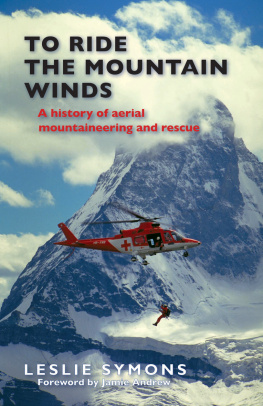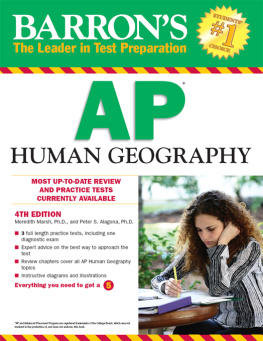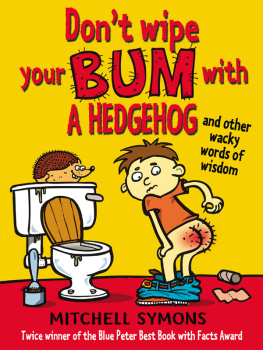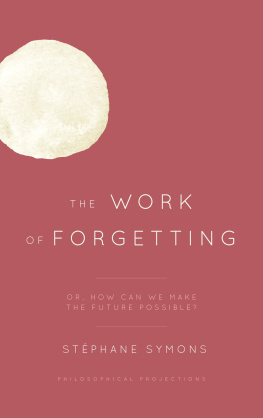First published 1979 by Westview Press
Published 2018 by Routledge
52 Vanderbilt Avenue, New York, NY 10017
2 Park Square, Milton Park, Abingdon, Oxon OX14 4RN
Routledge is an imprint of the Taylor & Francis Group, an informa business
Copyright 1967 by G. Bell & Sons Ltd
Revised edition 1978 by Bell & Hyman Ltd
All rights reserved. No part of this book may be reprinted or reproduced or utilised in any form or by any electronic, mechanical, or other means, now known or hereafter invented, including photocopying and recording, or in any information storage or retrieval system, without permission in writing from the publishers.
Notice:
Product or corporate names may be trademarks or registered trademarks, and are used only for identification and explanation without intent to infringe.
Library of Congress Cataloging in Publication Data
Symons, Leslie.
Agricultural geography.
(Westview advanced economic geography)
Bibliography: p.
Includes index.
1. Agricultural geography. I. Title. II. Series.
S439.S95 1979 338.1'09 78-26680
ISBN 13: 978-0-367-02113-9 (hbk)
When in the early 1960s I was invited to write a book on agricultural geography, I felt that my prime concern was to outline the principles and methods by which the subject should be approached and also to illustrate these by selecting particular regions for moderately detailed coverage, while not attempting a global survey of types of agriculture such as may be found in standard texts on economic geography. Since the first edition of Agricultural Geography, several other books with the same title have been published, and the various approaches to the same field of study have led to a reappraisal of the objectives of my own.
Basically, it remains my intention to provide a guide to what I consider to be the factors that should be taken into account in any study of agricultural distributions, and to provide enough of the substance of this knowledge to enable the book to form the basis of a course of instruction without the necessity of having at hand the resources of a large library or even the use of a large number of other texts. Hence, in chapters 'Mixed Agriculture', deals with farming as carried on through a system of private enterprise and medium-sized or even small farms operated mainly by family labour. Many of the farms of the U.S.S.R., described in the next chapter, are also 'mixed', with both crops and livestock being produced on them, but the system of organisation and scale of operations is totally different, illustrating an entirely different approach to the production task. Hence, these chapters should not be seen as designed to fit exactly into the historic classification of world types of agriculture preceding them they are not illustrative of 'types of agriculture' in this sense. They do, however, illustrate the framework within which types of agriculture and regions may be discerned. Similarly with the following chapters on plantation and subsistence agriculture.
. These are subjects of particular importance for the improvement of farming and increasing of production, because those who create and develop policy in economic, social and political terms need the best information that can be provided as a result of academic sifting of material. Volumes could now be filled with the many statistical and other procedures developed by research workers, but only a few can be dealt with here, especially as the length of the book is being kept very close to that of the first edition in order to keep the price as low as possible.
The approach has, therefore, continued to be concentrated on basic and well-tried techniques which are described in reasonable detail with briefer references to other devices which may be more exciting methodologically but of less proven value. Some emphasis has been placed on techniques suitable for use in field classes, especially in land use and land potential evaluation.
Since the publication of the first edition there has been much more widespread attention than formerly to the vital question of feeding the world's population and to conservation of the environment. It is dismaying that, in spite of intense scientific work and economic support leading to substantially increased yields of crops, any long-term balance between world food supplies and demands seems to be becoming less and less likely. The rapid growth of world population and the effects of monetary inflation have, in fact, worsened the position of many of the less wealthy countries. There has been little liberalisation of world trade and, indeed, many see a distinctly counterproductive element in the enlargement of world trading blocs such as the European Economic Community, which restricts the import of food from more efficient agricultural systems, while increasing its own problems caused by the accumulation of surpluses at prices which place them beyond the reach of the mass of the consumers. If this led to diversion of food to more needy peoples this would be beneficial, but unhappily there remains no indication of a solution to the dietary and financial problems that impede such a realignment of trade in agricultural products.
Environmental deterioration is closely linked with agricultural problems. Not only in soil erosion but in pollution of rivers, lakes, seas and the atmosphere there are severe and increasing threats to agricultural production. The sterilisation of ever-increasing areas of land by new urban and industrial buildings and the failure to clear blighted urban areas the legacy of past industrial ages adds to the problems. Society, it seems, can find endless resources for advertising, commercial exploitation and non-productive activities, but cannot organise either production and distribution of essential commodities without gross inefficiency and waste, or the protection of irreplaceable natural assets for the future.
Thus, the concern with man's treatment of his planet and his fellow men (which we are tempted to call 'inhuman' but is, regrettably, essentially human) that guided, in some part, this particular approach to agricultural geography, has in recent years become more acute, sharpening impatience with politicians, merchants and at least some scientists and academics for their lack of serious attention to these fundamental problems. Perhaps by the time the next revision of this book is needed, people will have adopted new attitudes and attempted seriously to reduce waste and to adopt practices in day-to-day living which will give more hope for the future, but it is not easy to be optimistic.














